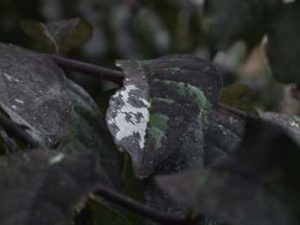Scale and aphids suck on the plants, extract the nutrients but do not utilize the plant sugars and water. This “honey dew” then coats the leaves and stems of the plants being fed upon or, in many cases, plants that are below the plants or trees being attacked. The sooty mold is very noticeable and is definitely an indicator of aphid or scale activity.
The presence of sooty mold does not necessarily mean your plant has scale or aphids. In many cases trees overhanging your planting may actually be the location of the insect and the honey dew is simply raining down on your landscape plants. The remedy for this is to treat the large overstory tree (very costly though we do provide that service), remove the overstory tree (very costly and possibly illegal) or simply hose off the plants under these trees to keep the honey dew washed off the plants before the sooty mold develops. During years of consistent rainfall, Mother Nature does this rinsing for you, so you are less likely to see it then. Treatment is not necessary for sooty mold as it causes only cosmetic damage to plants. Treatment for the cause may be necessary.
Hackberries, tulip poplars, elms, wild cherries and pines are the usual victims of the aphids while oaks are very susceptible to scales.
By the way, that “sap” that falls on your windshield is actually honey dew!

